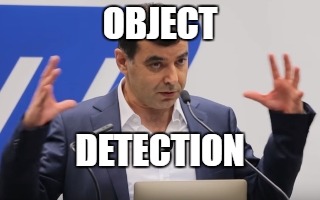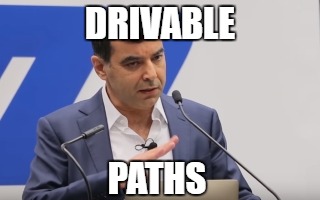[vc_row][vc_column][vc_column_text]It seems most prospective Model 3 owners aren’t willing to shell out cash upfront for a $3,000 “full self-driving capability” option that is likely years away from becoming available to engage.
In a poll posted by jsraw 81.3% (347) of respondents said they will not pay for the feature at purchase. Adding the option later will cost an additional $1,000. Of respondents, 18.7% said they will pay for FSD upfront.
According to Tesla’s website, FSD “doubles the number of active cameras from four to eight, enabling full self-driving in almost all circumstances, at what we believe will be a probability of safety at least twice as good as the average human driver. The system is designed to be able to conduct short and long distance trips with no action required by the person in the driver’s seat. For Superchargers that have automatic charge connection enabled, you will not even need to plug in your vehicle.”
Elon Musk has said that level 5 autonomous driving is possible with second generation Autopilot and the FSD option, meaning the car is fully autonomous in any and all conditions. During his TED talk in April, Musk said the company plans to conduct by the end of 2017 a coast-to-coast demo drive from California to New York without the driver touching the wheel.
Obviously, there will be regulatory hurdles ahead and Musk has said it will likely be two years before owners will be able to engage FSD capability.
See a few comments on the poll below, or go to the thread here.
 Swift
Swift
 EinSV
EinSV
 jason1466
jason1466
 Waiting4M3
Waiting4M3
 Enginerd[/vc_column_text][/vc_column][/vc_row]
Enginerd[/vc_column_text][/vc_column][/vc_row]
In a poll posted by jsraw 81.3% (347) of respondents said they will not pay for the feature at purchase. Adding the option later will cost an additional $1,000. Of respondents, 18.7% said they will pay for FSD upfront.
According to Tesla’s website, FSD “doubles the number of active cameras from four to eight, enabling full self-driving in almost all circumstances, at what we believe will be a probability of safety at least twice as good as the average human driver. The system is designed to be able to conduct short and long distance trips with no action required by the person in the driver’s seat. For Superchargers that have automatic charge connection enabled, you will not even need to plug in your vehicle.”
Elon Musk has said that level 5 autonomous driving is possible with second generation Autopilot and the FSD option, meaning the car is fully autonomous in any and all conditions. During his TED talk in April, Musk said the company plans to conduct by the end of 2017 a coast-to-coast demo drive from California to New York without the driver touching the wheel.
Obviously, there will be regulatory hurdles ahead and Musk has said it will likely be two years before owners will be able to engage FSD capability.
See a few comments on the poll below, or go to the thread here.





Last edited by a moderator:






